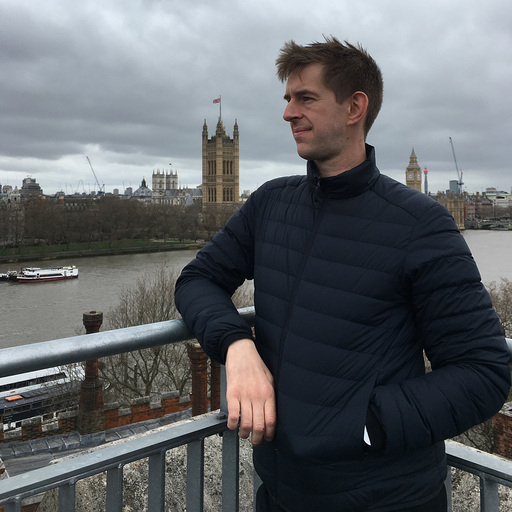How a Nazi Megastructure Became Luxury Flats
- Youtube Views 1,505,211 VIDEO VIEWS
Video narrated and hosted by Fred Mills. This video contains paid promotion for Straight Arrow News.
IN NORTHERN GERMANY, a colossal remnant of the Nazi regime is stirring controversy—not for its past, but for its transformation in the present. The Colossus of Prora, once envisioned as a seaside resort for National Socialist tourism, has survived the ravages of World War II only to face a distinctly modern fate: it is being converted into luxury apartments.

Above: The Colossus of Prora, in Rügen.
This development has divided opinion. Proponents argue the repurposing offers a chance to rehabilitate a scenic part of Germany’s coastline and move on from history, while critics insist the site should remain a solemn reminder of the atrocities of the Third Reich.
Prora, situated on the idyllic island of Rügen, was conceived in the 1930s by the Nazi organization Strength Through Joy (KDF). The initiative aimed to provide affordable vacations for German workers, blending leisure with propaganda. Designed by architect Clemens Klotz, the sprawling complex was intended to house 20,000 visitors in eight identical blocks stretching 4.5 kilometers along the coast.
In 1936, 9,000 workers - including forced labourers - began work on the construction. Each block measured six storeys tall and 550 metres wide with a structure made of reinforced concrete - a novel technique at the time - with bricks used to complete the exterior walls. The project was enormously expensive, costing the equivalent of USD$900M in today’s money.

Above: Prora under construction in the 1930's.
The resort was to feature amenities such as a festival hall, cinemas, and a pier for cruise ships, all built on a monumental scale to project the regime’s power. Rooms were small, with each only sleeping two people, in a deliberate effort to make people spend more time in communal areas. This philosophy was summed up by KDF founder Robert Ley when he declaired “only sleep should be provided as free time”.
However in 1939 as the Second World War broke out, work on Prora
stopped. Only four of the accommodation blocks were fully completed and
work on much of the rest of the site hadn't begun. The site was captured
by the Red Army during the war, who attempted to demolish the complex,
but soon gave up after blowing up a small section of an uncompleted
accommodation block. Prora was so huge, engineers calculated it would
take half the Red Army's yearly allocation of explosives to finish the
job.

Above: One of the ruined housing blocks at Prora.
After the war, Prora became a Soviet military installation, hidden from public view during the German Democratic Republic (GDR) era. It wasn’t until reunification in 1990 that the site was reintroduced to public consciousness, prompting heated debate over its future.
In the decades following reunification, proposals for Prora’s redevelopment ranged from demolition to conversion into a mixed-use site featuring cultural, scientific, and healthcare facilities. Protected status was granted in 1994, preserving the structure and allowing tax incentives for developers willing to invest.
The transformation began in earnest in the mid-2000s, with the first developers converting blocks into high-end hotels and private residences. Today, the site boasts luxury apartments, a youth hostel, and various leisure facilities, but not without contention.

Above: Some of the redeveloped flats at Prora
Critics, including historians like Katja Lucke of the Dokumentationszentrum Prora, argue the extensive commercialization undermines efforts to memorialize the site’s dark history. For them, the balance between acknowledging the past and embracing a new future has tipped too far toward profit.
Prora’s story raises universal questions about how societies deal with the architectural legacies of oppressive regimes. Some structures, like Berlin’s former Gestapo headquarters, have been transformed into memorials. Others, such as the Berlin Olympiastadion, have been adapted for modern use while retaining their historical significance.

Above: The site of the Gestapo Headquarters in Berlin is now the Topography of Terror museum.
Supporters of Prora’s redevelopment, like Ulrich Busch, who led the Prora Solitaire project, believe reimagining such sites can humanize them. By transforming a propaganda tool into a place of joy, they argue, the building gains a new, positive narrative.
Prora’s transformation is a case study in navigating the intersection of history, memory, and progress. The debate over its future underscores the delicate balance between preserving the past and repurposing it for modern needs. As its story continues to unfold, Prora serves as a reminder that even the darkest chapters of history can inspire reflection, renewal, and, potentially, reconciliation.
This video contains paid promotion for Straight Arrow News. Check out Straight Arrow News to stay informed and get Unbiased, Straight Facts. Download the app here SAN.com/b1m.
Video narrated and hosted by Fred Mills. Additional footage and images courtesy of Copterdrone, Jörn Tirgrath, DW, Thomas Overberg, Dokumentationszentrum Prora, Berlin-Brandenburg Economic Archive: U5/3 Image archive of Philipp Holzmann AG/ Main Association of the German Construction Industry eV, Prora Solitaire.








